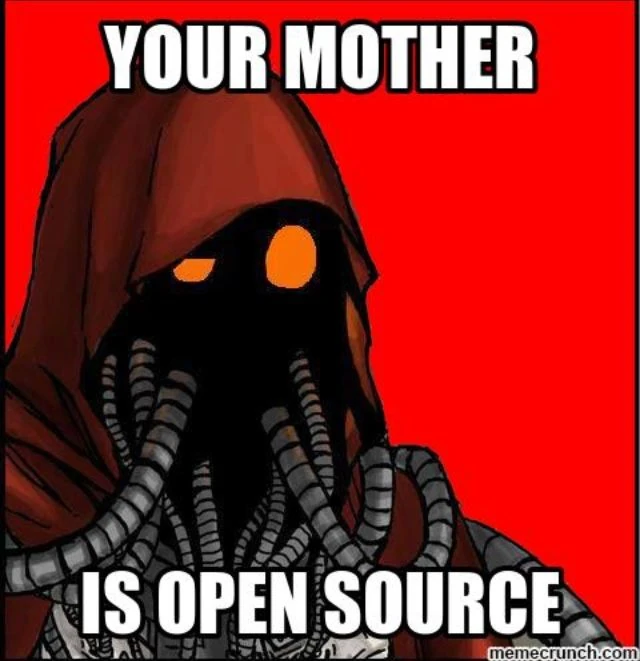I realized my VLC was broke some point in the week after updating Arch. I spend time troubleshooting then find a forum post with replies from an Arch moderator saying they knew it would happen and it’s my fault for not wanting to read through pages of changelogs. Another mod post says they won’t announce that on the RSS feed either. I thought I was doing good by following the RSS but I guess that’s not enough.
I’ve been happily using Arch for 5 years but after reading those posts I’ve decided to look for a different distro. Does anyone have recommendations for the closest I can get to Arch but with a different attitude around updating?
Based on what you describe, I would strongly recommend going with OpenSUSE Tumbleweed. It’s just as bleeding-edge as Arch, but all packages go through automatic testing to ensure they won’t break anything, and if some manual actions are required, it will offer options right before update. Moreover, snapper in enabled by default on btrfs partitions, and it makes snapshots automatically before updates, so even if something breaks somehow, reverting takes a few seconds.
One small footnote is that you’ll need to add separate VLC repo or Packman for VLC to have full functionality - proprietary codecs are one of the rare things official repos don’t feature for legal reasons.
On Arch rant: I’ve always been weirded out by this “Arch is actually stable, you just have to watch every news post for manual interventions before every update, oh, and you better update very often” attitude.
Like, no, this is not called stable or even usable for general audience. Updating your system and praying for it not to break while studying everything you need to know is antithetical to stability and makes for an awful daily driver.
I upvoted you, I am a fellow openSUSE fan and contributor.
But I need to point out that if you install VLC from a repository outside of Factory, then it’s not auto-tested.
Moreover, Packman is external to the openSUSE project altogether. If you use it, you are supposed to “just trust” that everything will be fine.
You are better off installing VLC through Flatpak.
Fair point! Honestly, that’s exactly what I ultimately went for, I just know there are people around who strongly prefer native packages.
Flatpak contains all codecs etc., and works flawlessly.
you just have to watch every news post for manual interventions before every update, oh, and you better update very often
You have to watch the factory mailing list and make any manual interventions for Tumbleweed, and frankly, you should be watching the news and taking any action required no matter the os.
A decent daily driver distro for regular user should not break on blind update - at most, it should warn the user automatically before applying updates. If user is expected to check news every time they want to update their system - it is not a good fit for anyone but enthusiasts.
Where did you get the idea that Arch is a daily driver for regular user? The very distro that tells in big letters: stuff can break, you better watch out on updates? The very distro that has command-line install process with chroot-like commands as official one?
Plenty of people seriously propose it as such.
It is not - at least if you’re not an enthusiast happy to tinker with your system all the time.
Yup, it really is not. Those plenty of people are doing a big disservice to others with such proposing. I am sad to hear it
There are distros based on Arch that are proclaimed to be user friendly and ready for general desktop/gaming use. Plus plenty of people online tell others to use Arch as a daily driver.
Regardless I don’t think an update should happen if it’s going to break something, unless you manually over ride the warnings it should be showing.
Well, Arch wiki explicitly tells you are expected to read the page before doing an update. Those distros which claim to be user-friendly as in “we treat you with kids gloves” definitely should take care of this, no questions here
Anyone who is not curious enough to type
yay -Pwbefore typingyayshould probably stick with something like Windows. And even then, you should watch out for the rare manual intervention.Edit: Tone.
I don’t think it makes sense to gatekeep Linux only to those who has time, energy, and dedication to continuously check for necessary interventions and to familiarize themselves with all the terminal utilities in the first place.
That is a sort of elitism we need to carefully avoid - one, because otherwise it would halven the desktop Linux community, and two, because there’s a huge group of people out there who need what Linux offers, but cannot dedicate themselves to it in the way enthusiasts do.
For them, there must be an option to push the button and get a smooth update, with everything resolved automatically or prompted in a user-friendly way. Arch is not that.
You feel comfy doing this - alright, no one stops you, Arch is great and has a purpose. But we should never put blame on users for not using their system The Arch Way™, because it’s too technical, too engaged, and is just a poor fit for most. People will not and should not accommodate for this just to use their system. There’s no need to.
If someone chose Arch and complains that it breaks things, it could be useful to point out Arch doesn’t have required guardrails to make it operable in a way they expect, and direct the user to other distributions that have them and potentially least painful ways to migrate.
Having tried Arch and its derivatives, and recognizing their strong points, I can absolutely tell the person needs another distribution, and that’s alright! Whatever fits anybody is up to them. And for stable rolling release experience without the need for manual checking (but also without some of the power features of Arch mainly geared toward enthusiasts) there’s OpenSUSE Tumbleweed.
Edit: Tone.
I don’t use Arch, I use Endeavour because they took Arch and made it better. As to why I used yay as my example, there are two reasons:
- It’s what I use
- It’s nice to show how easy and simple it is when it’s done properly and it normally takes 5 seconds, more when you have to do something. No wading through busy mailing lists hoping to spot an issue. I’m looking at you Debian and Tumbleweed!
I see!
I do, in fact, use Endeavour on my desktop as well, simply because I like snappiness and choice of Arch and similarly don’t wanna bother with the pure one (and also EndeavourOS forums are more friendly in my experience). I run OpenSUSE Slowroll (an experimental Tumbleweed build, same idea as Manjaro, but actually done right) on my other laptop, so can speak from the experience on both ends.
With Slowroll (and my gf’s Tumbleweed) I’ve only once faced the need for manual intervention, and it was simply to resolve a dependency change by choosing which package to leave - literally enter one number, and then it went on peacefully and correctly installing 1460 updates (yeah, they pushed a big Tumbleweed dump, 3.5 gigs total). On Arch and EndeavourOS, the last intervention was just recently, that’s the one OP talks about, and they do happen more often and are more complicated than I’d like.
I used Tumbleweed for eight or so years before switching to Endeavour and it only really bit me hard once. Update, reboot, and sudo no longer worked! If I had spent a bit more time going through the mailing list, I could have made a simple configuration change before rebooting and saved a lot of stress! It affected nearly everybody who installed that particular image.
FFS dude. It’s not lazy want updates to be as simple and pain free as possible. The entire point of these universal machines is to automate shit so we don’t have to think about it so much. We have different distros to run them because people prefer different ways of doing things. The one you pick doesn’t make you better or worse in any way. OP found out Arch is more work than they want to put up with for their daily driver and the benefits aren’t worth the cost. That’s a pretty big fucking club to be calling everyone in it lazy.
This kind of elitism is the most unnecessary, useless, vacuous, tedious horseshit and hurts Linux by pushing people away for nothing. Stop it.
I have been using Arch, EndouvourOS, and Chimera Linux now for years.
I never do this.
As I have been a Linux user since the early 90’s, I don’t think Windows is really the right fall-back for me.
taking any action required no matter the os
This is not really true for fixed release distros. I can’t remember when was the last time I had to read through the release note before Ubuntu version upgrade, or upgrading any package.
Ubuntu was by far the worst experience I have had in terms of updates destroying things. The number of times my post update reboot brought me back to a GRUB prompt, I’ll never go back.
Wayland or X11?
I used to think that, then I learnt the truth. Now-a-days, I say that you may as well use a rolling release because it’s not really any more work that a fixed release and you have up to date software.
Just to reiterate the same point - in fixed release, a package version is not released until all known issues are resolved.
At no point, it is end user responsibility to bother checking anything before installing a new version.
Oh yes, the most mythical of software. Bug free.
Bugs are of two types - known (found during testing by Distro maintainer) and unknown.
Fixed release fixes known bugs before pushing packages.
It is following the standard development life cycle.
Fixed release fixes known bugs before pushing packages.
So do rolling releases. What’s your point?
in fixed release, a package version is not released until all known issues are resolved.
That’s not really true. It’s more important that the issues are known. Sometimes they actually wait longer to fix issues since it would introduce changes
My bad, I meant “known major issues”. If minor issues are not fixed, they document it on release note. But, at no point any fixed release distro ever released breaking changes “knowingly”.
Well… not really. My current installation of Tumbleweed is three and a half years old, and back in 2022 the only reason I re-installed it was changing the NVMe drive. I’ve never read factory mailing list and don’t ever recall having made manual interventions. I’ve just booted it, updated (zypper ref; zypper dup), rebooted and continued working.
You can do this on Arch too and it will work great until it doesn’t. Manual interventions are rare and usually don’t affect everyone.
I’m running Arch for a very long time. I agree this is not a distro for general audience. I disagree, however, that it is not stable. When I’m doing work I don’t update my system. I enjoy my stable configuration and when I have time, I do update, I curiously watch which amazing foss software had an update. And I try them. I check my new firefox. I check gimp’s new features. etc… or if I have to do something I easily fix it, like in no time because I know my OS. Then I enjoy my stable system again.
Do you want to know what’s unstable? When I had my new AMD GPU that I built my own kernel for, because the driver wasn’t in mainline. And it randomly crashed the system. That’s unstable.
Or when I installed my 3rd DE in ubuntu and apt couldn’t deal with it, it somehow removed X.org. And I couldn’t fix it. That’s also something I don’t want. Arch updates are much better than this.
Guess we simply apply different meaning to the word “stable”. (you do you, though, and if it’s alright with your workflow, yay!)
To me, stable means reliably working without any special maintenance. Arch requires you to update once in a while (otherwise your next update might get borked), and when you update, you may have to resolve conflicts and do manual interventions.
Right now, I run OpenSUSE Slowroll (beta, not released yet) on one of my machines and EndeavourOS on the other. The former recently had to update 1460 elements, and one intervention was required - package manager asked me if I want to hold one package for a while to avoid potential dependency issues. Later, it was fixed, and otherwise it went without a hitch. This is the worst behavior I’ve seen on this distribution, and so to me it renders “acceptably unstable” for general use (although I wouldn’t give that to my grandma).
deleted by creator
Nice to know!
The VLC thing can be solved relatively easily by installing
opiwith zypper, and then runningopi codecs, which will add all the necessary repos and install everything. After that VLC (and h.264 etc) will work like a charm.True!
Although, as another commenter pointed out, this will use Packman repo which is not official and apps there are not going through the same testing as in official repos.
So Flatpak is generally a better option. Still, if you want VLC as a native package, opi is indeed an easy and reliable way of providing it.
OpenSUSE TUMBLEWEED, always updating, but they have an OpenQA tool that checks the builds for success, and if for some reason something did go bad you just reboot and pick the previous (automatic) snapshot. Lots of GUI tools to manage the system and packages via the various Yast2-GUI apps.
+1 for Tumbleweed. It’s a rolling release distro without (most of) the hassle and YaST is a fantastic utility which you can use to do many things. Nice graphical stuff to help you configure things like backup. Never had any breakages so far with Tumbleweed :)
Another +1 for Tumbleweed. It’s an simple setup, easy to roll back if needed, and has solid tools like Yast that help manage most aspects of your os.
Also, obs and opi are such useful services, I don’t think it’s possible to not use them once you’ve tried them. OpenSUSE Tumbleweed just gets so many things right that I’d recommend it to any person who’s moderately familiar with Linux with how easy it’s to use.
Thanks! This wasn’t a distro I knew much about but it’s looking like one I will try out. The way they test packages is exactly the kind of choices around updates I’m looking for.
I like how many options Yast exposes. I enjoyed learning how to do most of what I need in the terminal with Arch but being able to do everything I need through GUI helps when I’m not able to recall a lot in the moment but still need to do a thing.
The repos have a lot of stuff, but if you ever get stuck for q package you can install debs with alien command, or find community repoes here https://software.opensuse.org/ They typically offer 1 click installs, or direct rpm downloads
This is probably the best answer.
Plus, their equivalent of the AUR, the open build system, can actually be used to build packages for any system.
I’ve been an Arch user for about 15 years now, and I’ve never posted to the forums. Not because I’m great at this and don’t break things. I constantly break things and need to fix them. I don’t ask questions there because before you’ll get any help you are going to get sat down and explained (in great detail sometimes) how you are the stupidest piece of shit on Earth.
I posted on the Arch forums ONCE. Didn’t get a single reply, lol. Actually had to open an issue on the upstream git repo to get any info.
Interesting. Been an Arch user for about 12 years now. Your posts made me curious to check my forum post history. I have 4 Topics I started where I never got any reply or the only reply is from myself stating that I found a solution and what it is. Then I have 3 Topics where people actually engaged with me, asked for some more info gave some tips and pushed me in the right direction.
Arch is really for those who like to troubleshoot and actively maintain things when they break.
I’m pretty decent with linux and for the most part, I can fix arch when it breaks, but I don’t have the time for that. For that reason, I use Fedora and recommend mint.
deleted by creator
I did break my endevaourOS after I was unlucky enough to upgrade when grub got a huge non-bootable bug and probably there may have been some app bugs since which are minor tbh. Like currently I can’t run the bauh app, because it misses “bauh” in the python packages (lol).
Good for you that EOS now runs on systemd-boot, not grub lol. It grabs the EFI lines automatically from the boot partition and it just works. Personally, booting should be as simple as possible, as little personalisation as possible, make it just work.
Yeah no hate towards grub, because it doesn’t get too much breakful versions, but it’s a bootloader after all. Systemd boot works just fine for me, although I miss the customization aspect of it, but that’s what rEFInd is for.
I’ve been using arch for almost a decade, and haven’t had the system break.
I also don’t use aur helpers as I don’t like or trust them - I do tend to read PKGBUILDs before using them.
Still shocked that OP thought a new opt-depends was “lost in pages and pages of changelogs”.
I’m sorry, I thought about it more and remember the reason I had trouble with arch the last time.
It was that I could not get hardware decoding to work when playing videos in Firefox.
Everything reported that it should be working, but it didn’t.
I sometimes forget or delay updates because of life and have over 500 updates. Skim through them if they are patches, minors or majors, and just run. In any case, my disk’s are brtfs and I have timeshift for backups. If anything breaks horribly a live USB can restore it, if anything is weird I can restore it via UI. It autoruns every time I run Pacman and stores 5 copies of the “before” state. It also creates a daily copy for the last 5 days so 10 copies in total.
It’s more than enough that if something fails I’ll have something to go back to, and since it internally works with something akin to hardlinks snapshots don’t take that much space.
I’ve not had issues since setting it up, so, great.
Yup, OP has done his time in Arch meaning now competent, probably, time to go to Fedora and relax, close enough to the edge but not bleeding, good QA, For extra chill go atomic, check out uBlue…
I’d go for an atomic distro if it weren’t for the AUR. It’s too comfy.
Run Arch in a distrobox, done (in atomic you lean hard on distrobox and flatpak).
Can you install an app with GUI in a distrobox that then shows up on the app list? That’d be amazing but I doubt it since it’s using containerization, I wonder what “tightly integrated” really means. Anyway, I’ll look it up, thanks!
yup, the syntax is (from within the distrobox)
distrobox-export --app appname
The same thing happened to me. The package was split into separate packages. Install the package vlc-plugins-all.
sudo pacman -S vlc-plugins-allProblem solved
I don’t want to fault people for avoiding Arch’s instability in general but this is a very minor issue.
VLC is not a system critical package. I absolutely understand the mods choice to not put it in the RSS. At most they could put a notice in the pacman logs when it updates.
I like Arch because of the AUR and Pacman. Debian and Ubuntu had me adding a bunch of PPA’s which I found way more annoying. Debian probably would be my second choice though. As for the VLC thing, it took me less than 5 minutes from noticing there was a problem, to finding the solution online. Then I was watching The Whitest Kids U’ Know in VLC.
I’m curious as to why the package manager doesn’t fix this automatically?
They will probably get to there. It’s just not that important for the developers rn. They are working on a pacman rust rewrite and hopefully we can see more contributions to the project. I already considered contributing but C deterred me.
You can see the milestones here: https://gitlab.archlinux.org/archlinux/alpm/alpm/-/milestones
Thanks for this. My VLC broke similarly, but I use it rarely enough that I hadn’t looked into it yet.
Happy to help!
Fedora, great blend of bleeding edge and stability. Plus Linus uses it, so what better praise could you get.
I hope we’re talking about that Linus, and not that Linus. You know, the one that works with computers, and not the other one that works with computers.

My favorite Linus moment ever.
Can definitely recommend Fedora too. Software updates are at a good pace, and the system has a lot of polish all around. For example, all you need to do for updates is to press “update” in Discover and it’ll do everything for you, applying on reboot for stability. Most things “just work”.
that’s exactly how updates should work in every desktop distro. as an option of course.
systemd made it possible to install updates on shutdown.
packagekit enabled kde software to automatically obtain and prepare the updates.
plasma does the final touch nowadays to ask you on the reboot/shutdown dialog whether you want to install them.Basically all the system is in place, with code from widely used parties. packagekit can even integrate with your filesystem to make a snapshot before install. It’s wonderful. yet, it seems as if only fedora supports this full setup right now? or is there anything else?
I’ve tried quite a few distros (openSUSE, Ubuntu, Solus, Arch, so on) and none seem to offer this feature. It’s a shame, as it’s quite useful to have since updating a live system can sometimes cause some trouble. Even just the updating from Discover can be broken on some systems (I know openSUSE at the very least acts a bit funny when it comes to PackageKit, I think Arch as well).
Fedora and Bazzite both do it.
I’ve been told that opensuse tumbleweed has it. I’ve also read a suse forum post saying leap 16 will support offline updates, releasing in January, so they could be the first to support all of this with fs snapshots
Even just the updating from Discover can be broken on some systems
if you didn’t enable offline updates in systemsettings, then it’ll do roughly the same as you would in the terminal, so that’s not unexpected
Discover is a KDE thing, not a fedora thing. Not fedora exclusive.
It is a KDE thing, but Fedora is the distro on which it works best. On a lot of other distros it often runs into problems.
I can attest to that. It’s remarkable on how few distros updating through Discover actually works reliably. I always update through the terminal because at least that works. I’ve noticed this issue on Kubuntu (apt), Debian (apt), and OpenSUSE (zypper). I think these issues are related to the PackageKit integration.
The only issue is that you provide free testing for IBM, so it’s a no go if you try to boycott/avoid US companies. If you don’t it’s indeed a great choice.
How are you providing free testing by using something if you don’t actively file bug reports and such?
Telemetry, but I don’t know if many Linux user doesn’t turn it off. But I also don’t know if many Linux user doesn’t fill bug reports.
Also, if you use Fedora you may recommend it to people that will leave telemetry and/or file bug report. And you also contribute to make the red hat ecosystem relevant, potentially bringing paid customers for RHEL. It’s a drop in the ocean of course, but personally I don’t want to contribute to it.
Turn off telemetry?
And don’t report bugs when you find one ?
As long as they’re not for the core Fedora projects why not? Bugs for those should be scarce and there are many other users to report them anyway.
Using and contributing to FOSS is hardly scabbing regardless. Unless you’re donating to the project I wouldn’t consider even bug reporting as directly supporting IBM. The tangible profit to them is pennies if that.
deleted by creator
¯\_(ツ)_/¯ In this case, my personal experience and the dozens of other people who have agreed with me beg to differ.
I can totally understand that. In case you still want to give it a chance, I can highly recommend EndeavorOS. It’s basically pre-styled, pure Arch. But it has a welcome dialog, where you have a warning banner at the top if you need to be careful regarding an update. This directly links you to their Gitlab and forum with the steps you’d need to take to not break anything. This saved me multiple times already and I never broke my system, despite not even reading the Arch RSS feed or changelogs.
Besides the EndeavorOS forum is waaaay friendlier compared to the Arch one.
Endeavour forums helped when I upgraded during the 24 hours when Arch removed Amdgpu firmware. It did kind of make me wonder how many issues like that were present but that I’ve just dodged by random upgrade timing.
https://en.wikipedia.org/wiki/Principle_of_least_astonishment
Someone should inform whoever made that change. If a package is split in a new release, the initial state should match the final as closely as possible, in this case by installing the new optional dependencies automatically. (Although I’m not sure why they’d want to split everything out like that anyway; no other VLC distribution does that, so splitting is itself a violation.)
Maybe Manjaro might be an alternative? I haven’t personally used it. I don’t like this kind of surprise, so I stick to boring distros like Debian. I used to use CentOS but it was too boring.
Manjaro is significantly worse with updates breaking.
I used for a little while in 2018 and again in 2019, both times ended because it once became stuck in a boot loop after updates, and another time couldn’t boot after updates.
I started using Manjaro in 2018. I can’t remember any significant break.
deleted by creator
So go and use it then? I don’t care what you do.
You just gave me words for something that was previously just vague internal grumbling and emotions.
Manjaro knows how to aesthetically please me with their color choices and background art. I’ve got a negative impression from various podcasts and forum posts but I’m realizing I need to look into that more because I can’t recall specifics besides something about a past issue with package distribution.
i would recommend against manjaro or endeavorOS and such similar arch based distributions. they’re neat and more stable but have similar issues sometimes, for example the manjaro maintainers are generally known as pretty egregiously irresponsible.
arch is kind of a clusterfuck. the user experience is really poor for a modern linux distribution and the community has an insular attitude of calling everything a skill issue.
i used and maintained a bunch of arch systems for a long time. if you do this you inevitably end up using AUR packages, as some utilities a normal person would use for home and server shit are only available through AUR. updating gets fucky and it’s way more annoying bc you end up needing to constantly read long ass changelogs bc some dude changed the formatting in one UI element and pushed to main at 3AM and it won’t just updated with -Syu or similar args.
i was talking about this earlier on lemmy as an example of terrible UX and all the arch fanboys came to downvote me and write paragraphs in droves talking about how it’s actually just the user’s fault for using the AUR and that i don’t know how pacman works. one guy claimed it’s like Debian PPAs. uh no, the AUR is far less optional lmfao. and i do know how yay and pacman work, i had no trouble, i was just pointing out it was annoying to deal with constantly when using a system like a normal person.
when an OS has no user in mind when designing it… it’s kind of a shit OS and apparently forms a shit culture around it too, in my experiences the past few years on the internet.
the initial state should match the final as closely as possible, in this case by installing the new optional dependencies automatically
Sometimes. Some of us out there have use cases where we really, really don’t want our systems making choices for us and would rather read the notes every time. One could equally well argue that an OS whose entire purpose is letting the user make the choice suddenly doing something automatically without asking for input is the break in state that users would find astonishing.
I’d say you want Linux from Scratch then, but even then the Linux kernel maintainers are making choices for you.
But Linus is very firm in that they never break userspace, so you should never see an issue like this when updating the kernel.
Not necessarily
Had a kernel update which couldn’t read a specific HDD controller chip. Since then I always install LTS version along with regular just for booting up if the kernel upgrade fails.
I’ve been an Arch user for more than a decade and I’ll usually be first in line to defend it from dodgy claims about unreliability.
But that forum response is bizarre. Literally the last two RSS items right now are about how splitting packages will require intervention for some users (plasma and Linux firmware). VLC is an officially supported package, and surely this change would impact almost every VLC user?
New opt-depends is a nice pacman feature, but it hardly implies that things have been removed from the base package.
Literally the last two RSS items right now are about how splitting packages will require intervention for some users (plasma and Linux firmware).
Maybe a nitpick, but the linux-firmware situation is different, it’s not about needing to install extra packages (they turned the existing package into a meta package or whatever it’s called), but about that coinciding with some changes that can break the upgrade process and require you to force uninstall a package before proceeding.
But yeah, good point about plasma, the only differences I can even think of are that plasma is probably more popular, and definitely more important to have working.
I got burned by something like this on Manjaro when a rolling update completely borked my graphics card. The devs reacted in a similar way and it made me realise that my priority is stability over bleeding edge and tinkering.
On that day I moved to Fedora. Stable as hell, no fuss. My main OS should just work and not kill itself.
I still love it but jumped over to Bazzite Gnome recently, which is like Fedora with a few bells on top, coupled with having a read-only root-filesystem (stability, man!). It also comes with distrobox, which will let you run arch natively in a container if you need the AUR.
I had a similar moment of clarity after troubles with Manjaro and a couple other Arch based distros.
I really like the idea of a rolling release, but definitely nedd stability first.
I swung back the other way, and jumped on Ubuntu LTS. And gradually over time I ended up having to get updates from external repos etc, and ended up in the same position where updates broke things or didn’t work.
Currently running Ubuntu, and I just do an upgrade to the latest release each 6 months - after waiting a month after release date for everything to settle down. The upgrades to new releases have gone smoothly, I get updates to newer versions of software, and it’s been very rare anything breaks. Being a popular distro also means a big community to help with any issues as well.
Dammit, it’s like I just wrote an ad for Ubuntu!
Ah yes, the issue with modern Linux, the community.
I feel the shift to the current “git gud” style of blaming the user in any support has done more damage to Linux then any part of the software.
I don’t feel like this is a terribly recent attitude. It’s definitely one I’ve encountered repeatedly over a decade or more of dipping my toes in the pool. It’s not incorrect in a lot of circumstances, but it’s very difficult to find support when no one wants to help you improve. There’s always been a significant degree of ego in Linux user communities.
Not wanting to help would be better then this, its like they just want to “win” the support ticket. Its so terribly counterproductive.
I agree, people were telling me to RTFM in support chats on irc 30 years ago.
omg you guys are fragile af
I just had this exact same issue. I installed the package. Done.
No whining. It’s one fucking line of code.
They are not tech support. Maybe call applecare.
Why even type this?
Do you feel better doing so?
This is not a support forum, this is not tech support, this is lemmy and other then giving a great example of what the OP is getting at what does your comment address?
I’m amazed at the idea that in any technical community, an urging to gain more skill in your chosen environment could somehow be seen as negative.
I would make a joke here about arch and gatekeeping but its not just an arch issue.
It is most certainly not. (He says, as he comes fuming out of yet another meeting about a ticket that could have been solved at Tier 2 if support would learn how to read a log)
Oh pebkac is alive and well, no doubt about it. But expecting any level of expertise from an non commercial end user while simultaneously shooting down their questions is not going to help.
I absolutely agree, but here’s the problem in this context:
- OP isn’t non-commercial. By their own words, they’d been doing desktop support for MacOS - plastic-wrapped and glittery, but still a *nix. Five years in, one’s search-fu and tolerance for reading docs should be well developed.
- Their question was answered by the page they found. OP’s argument is they didn’t like the tone used to reply to THAT post’s OP and concluded from that tone that their expertise wouldn’t be valued “in the way they would like”. There’s room to develop some grit here.
- Arch isn’t intended for inexperienced users, and that is made clear in the docs. “It is targeted at the proficient GNU/Linux user, or anyone with a do-it-yourself attitude who is willing to read the documentation, and solve their own problems.” (https://wiki.archlinux.org/title/Arch_Linux#User_centrality) Getting this upset over a single package readjustment, no matter how badly it was communicated, tells me OP doesn’t have a ton of experience with bare metal linux. There’s just no way to sugarcoat that.
Arch gatekeeps on occasion, yes, but this isn’t that. This is the simple rules of that particular distro. OP is free to find something that better fits their needs; and it appears they have.
I see no problems with someone showing frustration, and in this case I don’t think arch should be proud of this example.
This is very much that, and why arch has the reputation it does. It will always be a fringe distro with the way the people (you included) shame and gatekeep.
the community is the worst part of most things, the RTFM attitude is better than toxic positivity though
Sure, but when I am looking for an answer toxic positivity and RTFM are often the same thing. The number of times people jump up to defend the manual and glaze the program without even checking if the info is in the manual (or if the manual even makes sense at all) is way too high.
I used to have to work on new stuff all the time and would have to read whitepapers or engineering change docs on the daily, and no the tangled mess most Linux documentation is in does not count as a functioning source of information.
The part that still grinds my gears is why bother to type out nothing of value like RTFM at all? Forums are filled with terrible posts belittleing the question instead of just answering the question. Its not helping anyone and at least to me makes little sense.
Sorry for not answering your questions, I haven’t used arch before. But dang that sucks I’ve been wanting to try arch for a little while but I didn’t know they would happily push updates they know will break certain programs.
It’s more like they expect you to do more reading than I would like to do. If I had been reading more of what they would like, I would have known I was expected to make a decision before updating and install an additional package. So from that view, they didn’t push a breaking update.
When an upgrade spits out that much text, you should bat an eye.
I’d like to be able to take it all in but I can go weeks without the energy or interest to read a wall of text. Other times I’ll start an update and lose interest while it downloads. I realize these are personal problems but that’s why I value custom tools like Linux I can adapt to my needs and shortfalls.
Been that way since the beginning. It’s an experimental distro, not for production systems.
Arch is definitely not “an experimental distro”. It doesn’t just break, and all the software in their repos is considered stable.
If you have been using Arch for any meaningful amount of time, the massive output from OPs upgrade should be glaring.
It is an experimental distro, that’s what was the original purpose. That’s coming from what their website stated toward the beginning of the project. They may not call it that now, but not much has fundamentally changed in arch since that time besides the introduction of systemd.
Just look at their principles.
https://endeavouros.com/ https://garudalinux.org/ both arch based maybe you will like the forum style better and they will probably also give you this information.
I doubt the forum style is really the issue.
EndeacourOS, one of my favourite distros, uses the same packages (the real Arch ones). So everything he says here applies.
i mean the communication style on the forum.
i think almost all arch based distros use the arch repos plus there own. i think only manjaro does there own thing.
Very true though most have more in their own repos than EOS does.
I like Garuda community.
I do too. Though to be fair to OP, Garuda didn’t advise about the vlc problem either. I had to go hunting on my own to figure it out. But anyway, still loving Garuda and it is much less painful than any other OS I’ve ever used.
+1 for Garuda. It’s nice that they have their own way of updating (garuda-update), which also handles situations like this one. It was very satisfying to not have to do anything when the linux-firmware change happened a couple of weeks back.
Oh, also snapshots by default are a chef’s kiss
i used arco linux and they just linked the word update to the arch command to update and that made it very easy to update i don’t remember the correct name for this. i do not know if garuda does the same or if they have there own program to do this.
Garuda works differently. You use garuda-update instead of pacman, and it takes care of just about everything for you. So, for example, if you have something like needing to uninstall a package because it was split (like linux firmware), garuda-update just takes care of that for you (after they update the scripts, which takes at most a week usually)
ah ok good to know.
I use Debian, for the stability.
Gentoo, honestly.
The community is much more friendly, the system is probably more arch than arch. The downside is compiling, but big packages have binaries now, and small packages build and install just about as fast as a binary distro.
Good hunting!
Thanks for the suggestion. I enjoyed how much I learned from picking out packages to get Arch working. I’m getting a similar excitement reading about Gentoo use flags. Giving it serious consideration.
The problem with Gentoo is that you can’t install anything in a hurry.
Run VMs on Arch:
- pacman -S virt-manager
- Done.
Run VMs on Gentoo?
- Read the Wiki
- Find out which USE-Flags you will want
- Fnd out the dependencies it’s based on (QEMU), read that Wiki entry too
- See what USE-Flags you want
- See what Kernel options are needed. Recompile Kernel if changes were necessary.
- emerge -av app-emulation/virt-manager
- See if you have read the Wikis of all dependencies.
- Install.
- Read the dependencies wikis for how to set things up.
- Done
Yes, this is an extreme example, but many large packages are a bit like this.
That’s why you will tripple-check if you really need sonething before installing it on Gentoo, or you are like me and install Boxes in a Flatpak instead.Personally i like Gentoo more than Arch because of all the buttons and knobs, and once it’s set up it does not need more time than Arch, but installing stuff is sometimes hard.
I loved Gentoo, it was the first distro I actually stuck with for more than a couple months, I used for 7 years or so.
I went to arch because something broke (probably my fault) and I needed to write a paper that was due soon, and compilation of the required software took too long, so I switched so it wouldn’t happen again. Arch was sold to me as “Gentoo with binaries”.
That being said I think you’re being unfair. I read the Arch’s wiki before installing unknown packages, mostly skimming, just like I did with Gentoo but Gentoo’s docs were somewhat superior. The docs were one of the things I missed.
Most of the time I didn’t read about the use-flags, except for big packages like Gnome. I only changed the use-flags if I knew for sure I wouldn’t use that functionality, so all the maybes and what-ifs still got compiled. TBH fiddling too much with use-flag feels like a newbie thing. On Arch there are actually more steps: I install the big multi-packages then uninstall the ones I don’t want, because those are less than the ones I want, and I don’t risk missing something.
On neither Gentoo or Arch I read the docs of the dependencies unless there’s a specific reason.
Same goes for the Kernel. Don’t disable things you don’t know about, enable all things you maybe will use and all the what-ifs. Once I knew what these were, setting this was quick and simple because they are actually just a couple options.
All that only has to do once, because once you know, even if you reinstall the OS you don’t have to investigate again unless something goes wrong because of changes.
The community of Gentoo is great! Arch’s community is okay.
With both Arch and Gentoo you have to learn about the system and make choices. With Gentoo you have to make more choices but making them and learning is easier than Arch. If OP used Gentoo this would have gone smoother.
I agree that the Gentoo wiki is almost always better than the Arch wiki (and would recommend it to any user), but i really doubt installing complicated packages is remotely as hard as on Gentoo.
While i have never used Arch before, i did use Manjaro, and there stuff was always just install the package and be done. I never had to alter the Kernel config, and all program features were just there. I also had VMs on Manjaro, and i do not remember any manual configuration (though that was many years ago, so maybe i misremember).
Recently i wanted to encode a video in ffmpeg, but it didn’t work. After a bit of searching i found that the codec requires a use-flag to be set. Classic Gentoo moment.
It’s not that i dislike Gentoo. In fact i do not consider returning to Arch (but i might switch to NixOS if my Gentoo install breaks). But i wouldn’t switch to any other distro.
It’s just that Gentoo is configured in a way that is so minimal by default that even basic use-cases require changes in the Kernel config: systemd? Kernel config. Bluetooth? Kernel config. LUKS? Kernel config. Amdgpu? Yes, exactly. BTRFS? Yes. Blender? Yeah OK, that goes without kernel config.
And the worst about the Kernel config: You don’t know which values are set by default. You might just end up in nconfig realizing that the values were already set.Then there is the instability in the distKernel (which i use). I think i started with Kernel 5.10LTS ish. Every upgrade went well until like 6.1 LTS, when Emerge complained about i think module ordering or something. It would not emerge a newer Kernel any more, which made me reset my Kernel config and redo it entirely because i thought Kernel 5 and 6 configs might be incompatible. That worked (somehow) until 6.6 LTS, which i wanted to install at version 6.6.6 LTS. But emerge complained it could not install it. I waited and ignored the update, and eventually got trough at version 6.6.20 or so. After that it refused to update again, which made me blacklist all non LTS kernels. I am now on 6.12 LTS, even though i am not a LTS guy, simply because i don’t want the hassle.
And still, after all of this effort for being minimal, it boots in like 20s, while Arch does it in like 3 or so. Gentoo hates me.
Gentoo certainly teaches you a lot, but I would never recommend it to an average user. If you want to get any benefit from use flags for any packages, you will be compiling them from scratch and possibly their dependencies as well. Small packages are pretty fast, sure, but if you try to do something like compile Firefox, you could be waiting all day for that if you don’t have a Threadripper or similar.
Practically, unless you run exotic hardware you’re unlikely to get any actual tangible benefits from tweaking most use flags on most packages. Which begs the question of why you’re using such a low-level distro in the first place…
Idk maybe I just didn’t get it, but my month of running Gentoo was mostly just annoying. Again, great learning experience, but didn’t make sense to me as a daily driver. It feels like it’s for people who want to pore over the detailed patch notes for every package on their system, which is clearly not OP.
NixOS gives me enough control over how individual packages are configured if I really want it, but in a way that stays entirely out of my way until I specifically want to fiddle. I’m not saying NixOS is any better for a new user, but as a pretty experienced one I found it more rewarding once I understood the ecosystem.
I’m a social worker, not a CS major.
Firefox, binaries.
Benefits, community and flexibility.
Basically what OP is asking for, yes?
This might be the answer really, Gentoo is my favorite distro in theory. In practice I’m a lazy ass that just ends up installing binary packages for everything and missing the AUR.
I’m lazy too!
Gentoo stable scratches that itch quite effectively.
Front loading though, that’ll take some work!
























